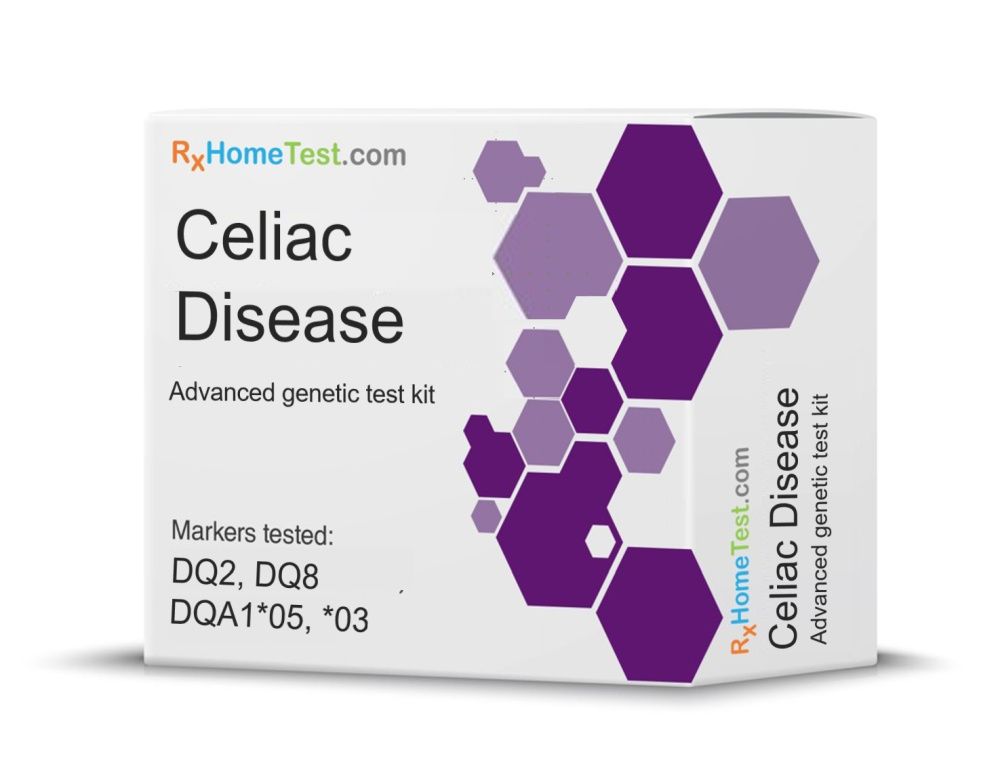
Learn about the differences between celiac disease and gluten intolerance. Then use an at-home health test kit that's best suited to your condition and confirm the differences.
Do you experience unpleasant physical symptoms after consuming certain types of food? Gluten intolerance and celiac disease can cause digestive problems like bloating, abdominal pain, irregular bowel movements, and fatigue after people eat grain-based products such as bread, crackers, and pasta. While both conditions require careful dietary management to control symptoms, there is an important difference between them. The goal of this blog is to explain the differences in celiac disease versus gluten intolerance to help you better understand these conditions and how to manage them.
Celiac disease is an autoimmune disorder that causes the body's immune system to react abnormally to gluten, a protein found in wheat, barley, and rye. Gluten triggers an inflammatory response that damages the lining of the small intestine, leading to the malabsorption of essential nutrients like iron and calcium. Symptoms can include abdominal pain, bloating, constipation, diarrhea, and anemia. Without treatment, celiac disease can lead to serious health problems. Treatment involves following a strict gluten-free diet for life.
Gluten intolerance is an umbrella term for a range of conditions that cause sensitivity to gluten. Individuals who suffer from gluten intolerance may experience symptoms such as nausea, bloating, abdominal pain, fatigue, and headaches after eating foods containing gluten.
The main differences between celiac disease and gluten intolerance are that gluten intolerance does not damage the small intestine and is not an autoimmune condition. Instead, gluten intolerance is thought to be a result of an inability of the body to digest gluten properly. Symptoms can vary from person to person and are triggered by different levels of gluten intake. In some cases, individuals may experience relief from symptoms when they remove gluten from their diet. However, it is important to note that gluten intolerance is not the same as celiac disease and does not require a strict gluten-free diet. Instead, individuals should focus on eating a balanced and nutritious diet while avoiding foods that cause their symptoms to flare up.
Wheat allergy is an immune reaction to any protein in wheat, other than gluten. Symptoms of such an allergy include itching, hives, or a life-threatening reaction called anaphylaxis, which can cause suffocation. During wheat allergy, the white blood cells of the immune system release antibodies called immunoglobulin E (IgE) to “attack” the wheat. Also, tissues in different organs send out chemicals to alert rest of the body about the potential attack from a ‘foreign invader’—which is wheat—causing these symptoms. Those with wheat allergy must avoid eating any form of wheat, but they may still be eat gluten from rye and barley without any serious health issues. In rare cases, one can be allergic to wheat and have celiac disease or gluten intolerance.
Celiac disease and gluten intolerance cause similar symptoms, making it difficult to distinguish between the two. To determine whether you have celiac disease or a gluten intolerance, you should consult your doctor. They can provide reliable guidance and help you decide the best course of action.
If your doctor suspects you may have a gluten intolerance, they may suggest an elimination diet that involves avoiding foods with gluten for several weeks to see if your symptoms improve. Your doctor may also suggest certain tests for celiac disease, such as a blood test or biopsy of the small intestine. A biopsy of the small intestine is the most reliable diagnostic test for celiac disease.
In addition to consulting with a doctor and completing in-office blood tests, there are at-home testing options available for those who think they may have celiac disease. At-home test kits can provide some initial insight into whether an individual has this condition but should never be used as a definitive diagnosis.
At RxHomeTest, we have gluten sensitivity genetic test kits that check for the genes HLA-DQ2 and HLA-DQ8. Quick, easy to use, and discreet, these kits allow you to identify your risk of celiac disease. Sharing your concerns and the results of your test with your doctor can hasten the diagnostic process and ensure you get the treatment you need to live happily, healthily, and symptom-free. A Celiac Antibody Test can check for presence of antibodies against gluten, while an IgE Allergy Test can identify allergy to wheat.

Order an At-Home Celiac Genetic Test.
Celiac – FAQs - key facts about gluten intolerance.
The Differences Between Genetic and Antibody Celiac Tests - a summary of key differences.
Early Warning Signs for Celiac Disease To Look Out For - a summary of key symptoms.
How to Read a Celiac Genetic Test Report? - makes it simple, easy to understand your results.
What to Do With Your Food Sensitivity Test Results? - follow these steps to get most out of your test.
Replacement Grains for Gluten-Free Diets - brief explanation of few grains to consider.
Food Allergies vs Food Sensitivities: What’s the Difference? - a few simple steps to differentiate.
Food Allergies in Children - a short summary.